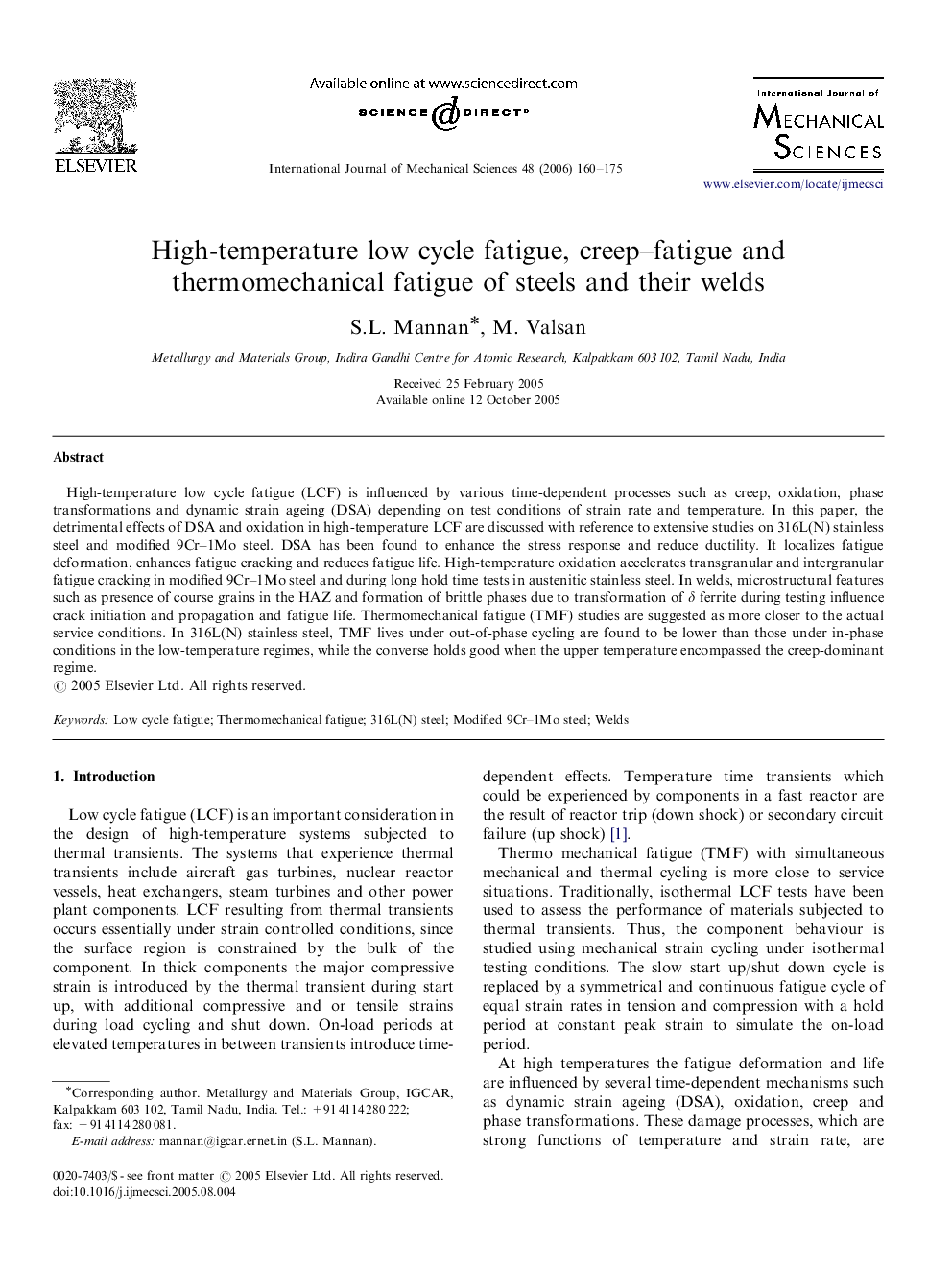| کد مقاله | کد نشریه | سال انتشار | مقاله انگلیسی | نسخه تمام متن |
|---|---|---|---|---|
| 784258 | 1465094 | 2006 | 16 صفحه PDF | دانلود رایگان |

High-temperature low cycle fatigue (LCF) is influenced by various time-dependent processes such as creep, oxidation, phase transformations and dynamic strain ageing (DSA) depending on test conditions of strain rate and temperature. In this paper, the detrimental effects of DSA and oxidation in high-temperature LCF are discussed with reference to extensive studies on 316L(N) stainless steel and modified 9Cr–1Mo steel. DSA has been found to enhance the stress response and reduce ductility. It localizes fatigue deformation, enhances fatigue cracking and reduces fatigue life. High-temperature oxidation accelerates transgranular and intergranular fatigue cracking in modified 9Cr–1Mo steel and during long hold time tests in austenitic stainless steel. In welds, microstructural features such as presence of course grains in the HAZ and formation of brittle phases due to transformation of δδ ferrite during testing influence crack initiation and propagation and fatigue life. Thermomechanical fatigue (TMF) studies are suggested as more closer to the actual service conditions. In 316L(N) stainless steel, TMF lives under out-of-phase cycling are found to be lower than those under in-phase conditions in the low-temperature regimes, while the converse holds good when the upper temperature encompassed the creep-dominant regime.
Journal: International Journal of Mechanical Sciences - Volume 48, Issue 2, February 2006, Pages 160–175